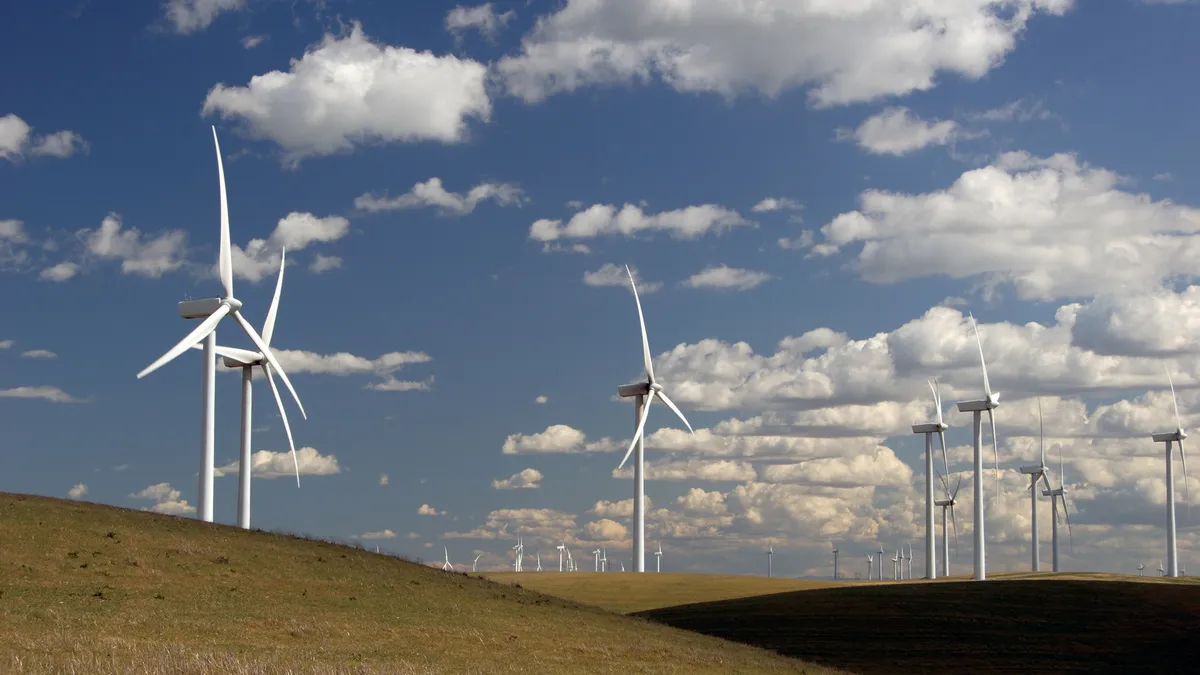Dive Brief:
- California's energy agencies are taking a first stab at assessing possible pathways to the state's ambitious goal of achieving 100% renewable and zero-carbon electricity by 2045, but concerns about system reliability — especially in light of the rolling blackouts that took place in the state this August — continue to dog regulators.
- The California Public Utilities Commission (CPUC), California Energy Commission (CEC) and California Air Resources Board (CARB) last week released a draft report on getting to a 2045 clean electricity portfolio, which indicated that the goal is technically achievable.
- But multiple stakeholders raised the need to think hard about system reliability at a joint agency workshop Friday, including Jim Shetler, general manager at the Balancing Authority of Northern California (BANC). "[W]e support California's greenhouse gas reduction goals as defined in SB 100 — with the understanding that implementation needs to be balanced against the equally important requirements of safety, reliability and affordability," Shetler said.
Dive Insight:
The report presents important initial insights into potential paths for the electric sector, Mary Nichols, CARB chair, said at the workshop, adding that "the initial work highlights the enormous challenge ahead, requiring a complete transformation in the type of electricity that Californians consume."
California's carbon goals are part of legislation passed by the state in 2018, called Senate Bill 100, which calls for 100% of electric retail sales in the state to come from renewable energy and zero-carbon resources by the end of 2045. The bill also required the three energy agencies to create a report evaluating the policy, and follow it up with updates at least every four years. The agencies intend to submit a final version of the initial report early next year.
The draft report uses a 60% renewables portfolio standard model as a reference baseline, and modeled, among other things, "core scenarios," which include technologies that have already been commercialized and have public cost data. Based on this analysis, the report concludes that achieving the 100% clean electricity goal is technically achievable, and could cost around 6% more than the baseline 60% RPS future by 2045, although that could change if renewables grow cheaper at a faster rate than anticipated by the models.
This modeling included only resources that have been commercialized, with vetted, public cost and performance data, including solar, wind, geothermal and bioenergy as well as green hydrogen fuel cells. However, they did not include "drop-in" hydrogen and biomethane — that is, as replacement fuels in natural gas power plants and potential zero-carbon dispatchable generation — after concluding that the technologies didn't meet those requirements
Similarly, both natural gas and coal-fired generation coupled with carbon capture and sequestration were excluded from the analysis, the former because of the lack of data around carbon capture, and the latter because of possible health impacts.
Meeting SB 100's goals in a highly electrified scenario would require record build rates for new generation, according to the draft report. It also concludes that natural gas is still the cheapest way to ensure a reliable system — although future cost reductions and innovation around storage technologies and other zero-carbon firm resources could change that.
"Further analysis is needed to evaluate costs associated with maintaining an aging gas fleet operating in a high renewables system," according to the report.
Reliability remains a top concern
But there are additional details that regulators think require more scrutiny for the next iteration of the report, especially in terms of reliability, which has been a major concern in California especially since an unprecedented heatwave this summer led to rolling blackouts in the state for the first time in 20 years. More analysis will be required to ensure that the portfolios forecasted in the modelling can meet system reliability needs, the draft report notes, and the CPUC and CEC are in the process of doing so.
BANC agrees with the overall analysis that existing technologies should theoretically allow the state to reach 100% clean electricity, Shetler acknowledged — but it would be premature to make this conclusion before the detailed reliability analysis is completed.
"[E]specially in light of the events of this August, we urge the agencies to view an honest and transparent discussion on reliability challenges as a positive element of debate that will advance the interests of consumers, and not view any reliability analysis as an inconvenient roadblock to decarbonize," Shetler added.
Danielle Mills, director of the American Wind Energy Association-California, agreed that regulators cannot compromise on reliability.
"A diverse and complementary portfolio of renewable resources and storage is the solution, with regional and offshore wind that complement California's solar and storage resources," she said, adding that the state will need to double or triple renewable and storage deployments to replace the suite of conventional resources that are scheduled to go retire in the next four years.
The analysis of the report's core scenarios suggest that reaching the SB 100 goal could cost around $5 billion more annually in 2045, or 6% more than the 60% RPS model, driven largely by investments in renewables, storage and transmission. But Doug Karpa, senior regulatory analyst at Peninsula Clean Energy, urged regulators to also do a more extensive analysis of how affordable the models are.
"I think many Californians are pretty keenly interested in, how does that translate into actual ratepayer bills?" he said.














